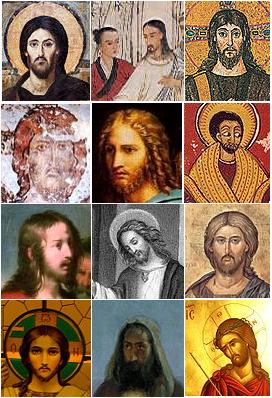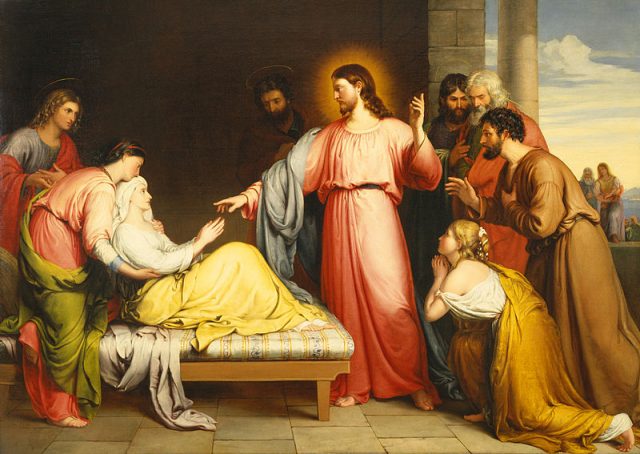What happens when you get three men in the same room who all claim to be the same person? That was the question that psychologist Milton Rokeach had asked himself while preparing for a psychological experiment that would breach the lines of ethics and morality in the pursuit of finding a cure for delusions.
Milton Rokeach had found a magazine article from Harper’s Magazine that spoke about two separate women who were under the belief that they were the Virgin Mary.

When these two women were brought together, the connection between both claims caused one of the women to snap out of her delusion, curing her of her illness.
Milton reasoned that if this worked the one time, perhaps it would work in a formal study. In 1959, he found the subjects of his experiment: three men who all claimed to be Jesus Christ. They were brought to a hospital in Ypsilanti, Michigan, to be monitored underneath Milton’s care.

His reasoning was that they would quickly snap out of their delusions once confronted with two other men who both claimed to be the same person.
After all, there was only one Jesus Christ. Yet the three men, Clyde Benson, Joseph Cassel, and Leon Gabor, would not so easily accept reality. Each man, suffering from a paranoid schizophrenic state, refused to let go of their own beliefs, even in the face of others who made the same claims.
Anger was present at the initial meetings between the three men. Since the title of Jesus Christ was exclusive, arguments and fighting broke out amongst them. Each man was hostile to the idea of another man making false claims, but none of them were willing to accept the truth about their own identities.

Milton Rokeach’s work had started out with the simple hopes of seeing that these men would be able to cure one another by their proximity.
When it became apparent that this would not be the case, he began to move into much more unethical territory. His fascination with the notion of identity led him to begin a series of manipulations meant to force change in his patients.

One such manipulation was to begin sending letters to Leon Gabor. One of Leon’s newest delusions had been that he was married to a woman whom he called Madame Yeti Woman.
This woman was no more real than his claim to divinity. Milton penned these letters as if he were Madame Yeti, giving him suggestions to change parts of Leon’s daily routines. He even went as far as to write that Madame Yeti was indeed in love with her husband.
Once Leon began to correspond with the fabrication, Milton continued the charade, using the letters to eventually challenge the idea that Leon was the Son of God. Milton’s reasoning was that perhaps by using one of Leon’s own delusions against another one, he would be able to cure the man. But that was not the case. Leon instead broke off all correspondence, refusing to acknowledge the fictional woman’s claims.

Another attempt to cure Leon involved getting one of the female research assistants to flirt with him. Milton hoped that her flirtations would pull the man out of the delusional state. Leon fell in love with the woman, but of course, she had simply been a part of the experiment and would not reciprocate those feelings. He was unable to break free of his mental struggles and instead held even tighter to his delusions.
Milton sent letters to the other two men and tried to manipulate them as well, but to no avail. They would not budge from their delusions. Their stay at Ypsilanti was unpleasant. With each man being forced to spend time with two other men who upset them and would sometimes even come to physical blows with one another, many believe the patients were not receiving proper treatment. The case can be made that, good intentions aside, they were simply guinea pigs against their will, chosen by a psychologist who used manipulation and falsehood as his methods of finding a cure. However it’s hard to judge in a case such as this.
In the end, Milton Rokeach was unable to find a way to break the delusions of the three men. While they managed to eventually grow used to one another and were able to learn enough to avoid the topic of Christ when talking to each other, they weren’t cured of their conditions by Milton.
A book was published in 1964 by Rokeach, titled The Three Christs of Ypsilanti, sharing the entirety of his research on the subject of curing delusions. The truth was that the two-year experiment was a failure. It had served no purpose than to cause undue grief to men who were already suffering from madness.
Read another story from us: The Theory that Jesus Healed his Followers Using Cannabis Oil
Eventually, Milton would come to the conclusion that the work he had done was unethical and had breached serious boundaries. He issued an apology in the reprint of his book in 1984, stating that “while I had failed to cure the three Christs of their delusions, they had succeeded in curing mine — of my God-like delusion that I could change them by omnipotently and omnisciently arranging and rearranging their daily lives within the framework of a ‘total institution’.”
